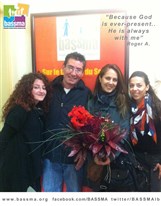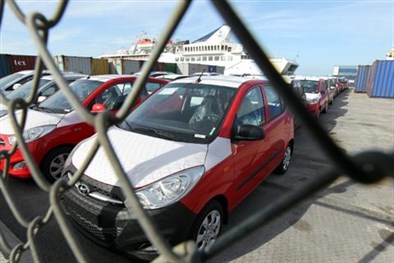source: www.dailystar.com.lb
Though the volume of car sales in Lebanon rose steadily in the first four months of 2013, Lebanese car dealers claim the seemingly rosy statistics mask a worrying decline in local purchasing power.
Last week multiple local media outlets reported that new car sales in the country rose 7 percent year-on-year in the first four months of 2013, according to the latest figures from the Association of Automobile Importers, on the heels of a 13.4-percent increase in the volume of vehicles sold in January 2013 compared to the same month last year.
These brief news items, especially when accompanied by reports that new vehicle registrations “surged” 4.1 percent year-on-year in January and February 2013, might lead casual readers to conclude Lebanon’s auto market has somehow resisted the downward pressures that have sent other sectors of the economy into a tailspin. Though there were 771 more cars sold from January to April 2013 than in the same four-month period of 2012, a closer look at the figures tells a different story.
“It’s not an increase actually,” said Samir Homsi, AIA president and the CEO of IMEX, the exclusive Lebanese dealership of Chevrolet and Cadillac cars. “The volume of sales in dollars has been reduced by 30 percent. What has increased is the number of units sold. People are going to baby cars – 80 to 90 percent of statistics you’re reading are baby Korean cars.”
Korean cars accounted for 48.6 percent of total auto sales in the first quarter of 2013 with 3,107 cars sold, followed by Japanese cars with 23.1 percent of the market – an 8.3-percent contraction year-over-year contraction in Japanese manufactured vehicles.
By contrast IMEX sold only 345 Chevrolet models between January and April 2013, a 20-percent drop year-over-year.
Meanwhile, Homsi said there had been a marked uptick in customers taking out car loans to buy new vehicles. Though he didn’t have precise statistics, he estimated that 90 percent of IMEX’s customers in 2013 took out bank loans to finance their purchases. Since many banks have extended the financing period of new car loans, banks yields on car loans have increased dramatically, he said.
Ghassan Bejjani, a sales manager at the Verdun branch of the Lexus and Toyota dealership BUMC attributed 70 percent of the sales volume in 2013 to Korean-manufactured Kia and Hyundai models under $10,000. Sales of these units have stayed relatively stable between 2012 and 2013, Bejjani said, while Japanese and European manufactured car sales have sunk because the high exchange rates of the euro and yen have priced these brands out of the entry-level market in Lebanon.
The popularity of Korean manufactured car imports below $10,000 has been boosted by low interest rates on new car loans offered by most Lebanese banks, he said. On average, banks charge 3.5-percent interest for new vehicle loans versus about 6 percent for used cars.
“This is what makes people shift from buying a used car to a new car,” Bejjani told the Daily Star. “The market in Lebanon has always been a small segment market. Small segments always make the volume. The Lebanese market has been doing an average of 33,000 new cars sold annually for the past five years. ... It may go up or down 8 percent one month. But on average, it’s been stable.”
But the volume of midrange and luxury cars sold in 2013 indicates more unpredictable purchasing patterns. While sales of Mercedes vehicles dropped from 227 in the first four months of 2012 to 174 in the same period this year, Porsche saw sales rise from 86 vehicles to 102 year-over-year during the corresponding period.
image:(The Daily Star/Hasan Shaaban)














